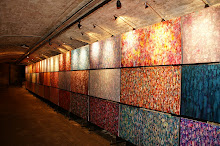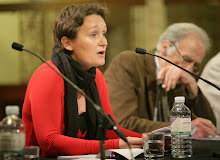You watched the procession; the trooping army’s fluttering banners; horses draped in gold; ministers with red umbrellas; and behind them all, the king standing on an elephant with shining tusks of gold.
It was 1297 and your diplomatic trip to Angkor was over, but you were reluctant to leave this bustling city of 750,000 people at the heart of the Khmer Empire.
It was so vast, so beautiful and ordered, how could you describe it to your Chinese Emperor? Angkor Wat was the most magnificent temple you had ever seen. It evoked Mount Meru, font of the cosmos, with its five gilded towers rising like peaks, and its vast artificial lakes symbolising the oceans. Its sacred reservoirs were practical too, storing monsoon rains to guarantee harvests; they were the source of the city’s six centuries of success.
But the system had become too ambitious, too reliant on a stable climate. When the first drought hit the empire lost its outlying lands. When the next drought hit the city failed. Angkor fell to invaders. They in turn tried to use its finely-balanced infrastructure, but it was beyond repair. The largest city in the pre-industrial world was abandoned, reclaimed by the jungle, and the wonders of the Khmer Empire were forgotten by all.
skip to main |
skip to sidebar







According to the UNFPA the population of the world increases by 1.2% a year.
That's 235,000 a day.
That's 235,000 a day.
GENE MEME is a blog, art installation and outreach programme about world population.
The GENE MEME art installation took place in the Crypt Gallery in London from 9 June to 20 June 2010.
The GENE MEME art installation took place in the Crypt Gallery in London from 9 June to 20 June 2010.
GENE MEME was supported by a debate asking what should be done about rising population.



Links to posts
- Ancestral Pueblo culture
- Angkor
- Antioch
- Bodmin Moor
- Cahokia
- China’s Great Leap Forward
- Classical Greece
- Easter Island
- Ephesus
- Fatehpur Sikri
- GENE MEME
- Hawaii
- Hispaniola
- Holodomor
- Illinois
- Juana Maria
- Kaskaskia
- Madagascar
- Minimata
- North Korea’s ‘Arduous March’
- Pitcairn Island
- Rabbits in Australia
- Rwanda
- Smallpox
- St Kilda
- St Matthew Island
- Sugar
- The Aleuts
- The American Dustbowl
- The ancient Olmec civilisation
- The Aral Sea
- The burial of Riez
- The collapse of the Nasca
- The decline of Bruges
- The deforestation of Ethiopia
- The extinction of the Moa
- The Florida Everglades
- The Gambier trade triangle
- The great civilisation of Sumer
- The Harappan Culture
- The Irish potato famine
- the last Nicoleňo
- The last passenger pigeon
- The Mayan civilisation
- The pleistocene extinctions
- The Sahel
- The Vikings in Greenland
Search This Blog

